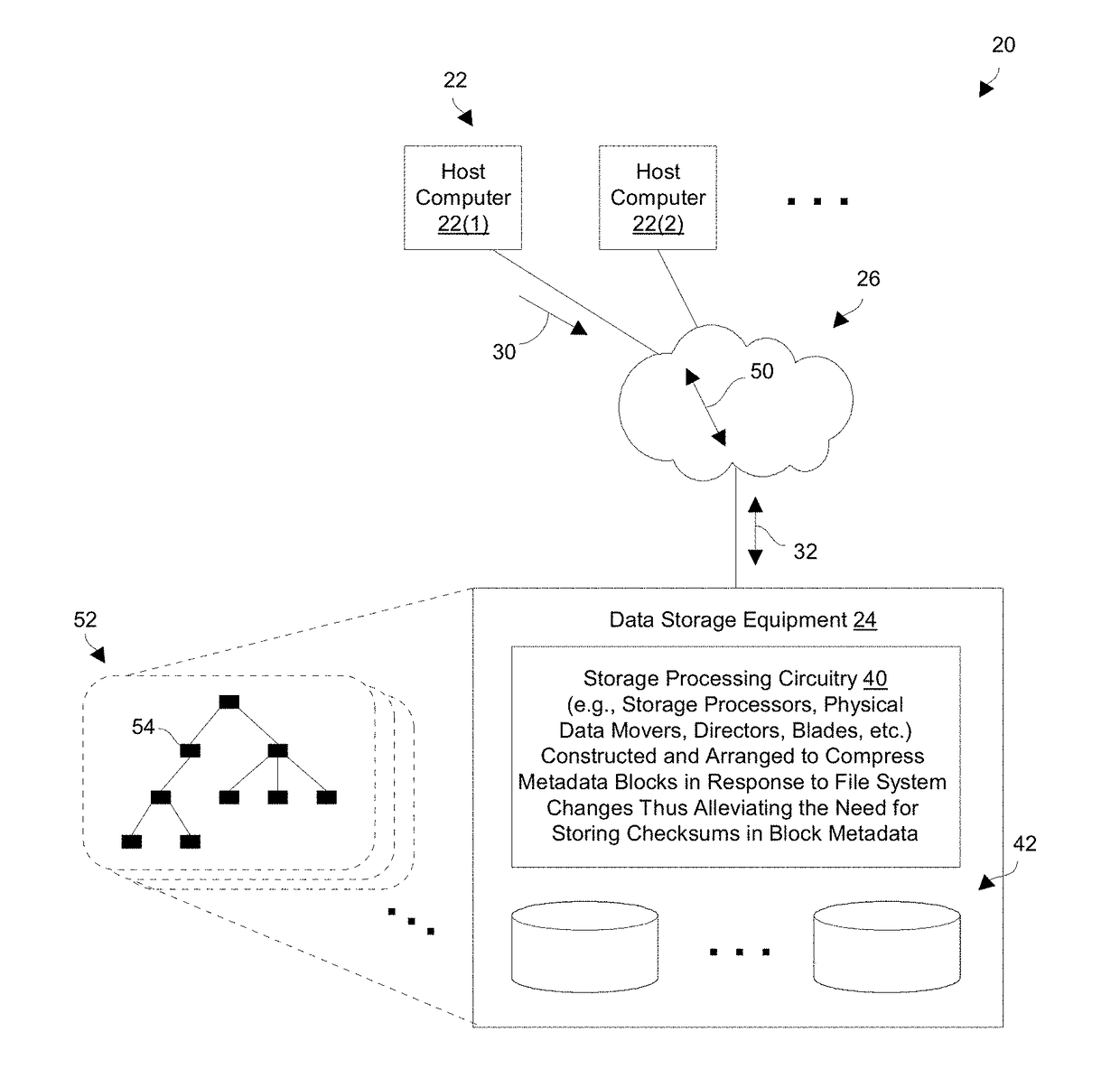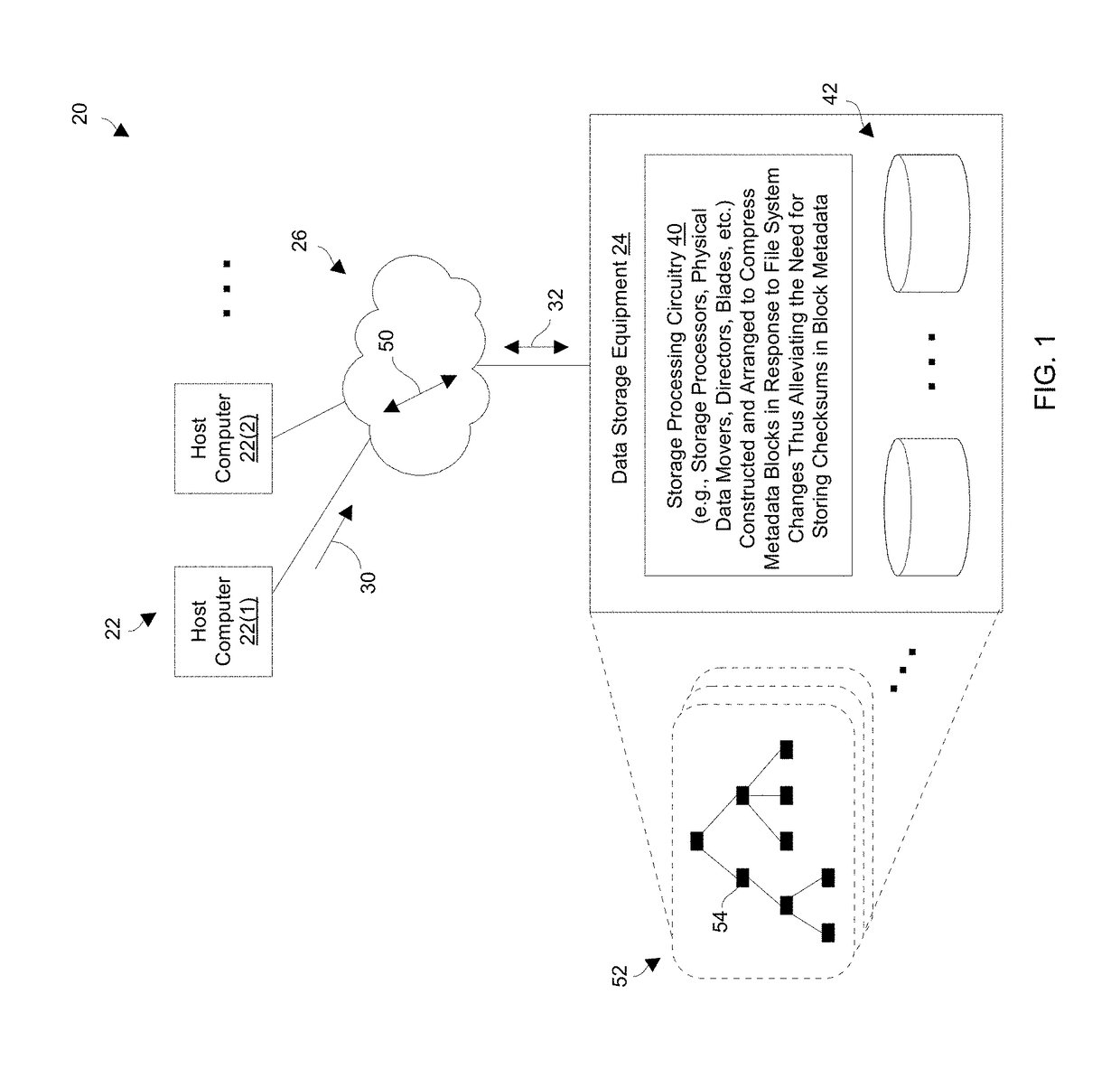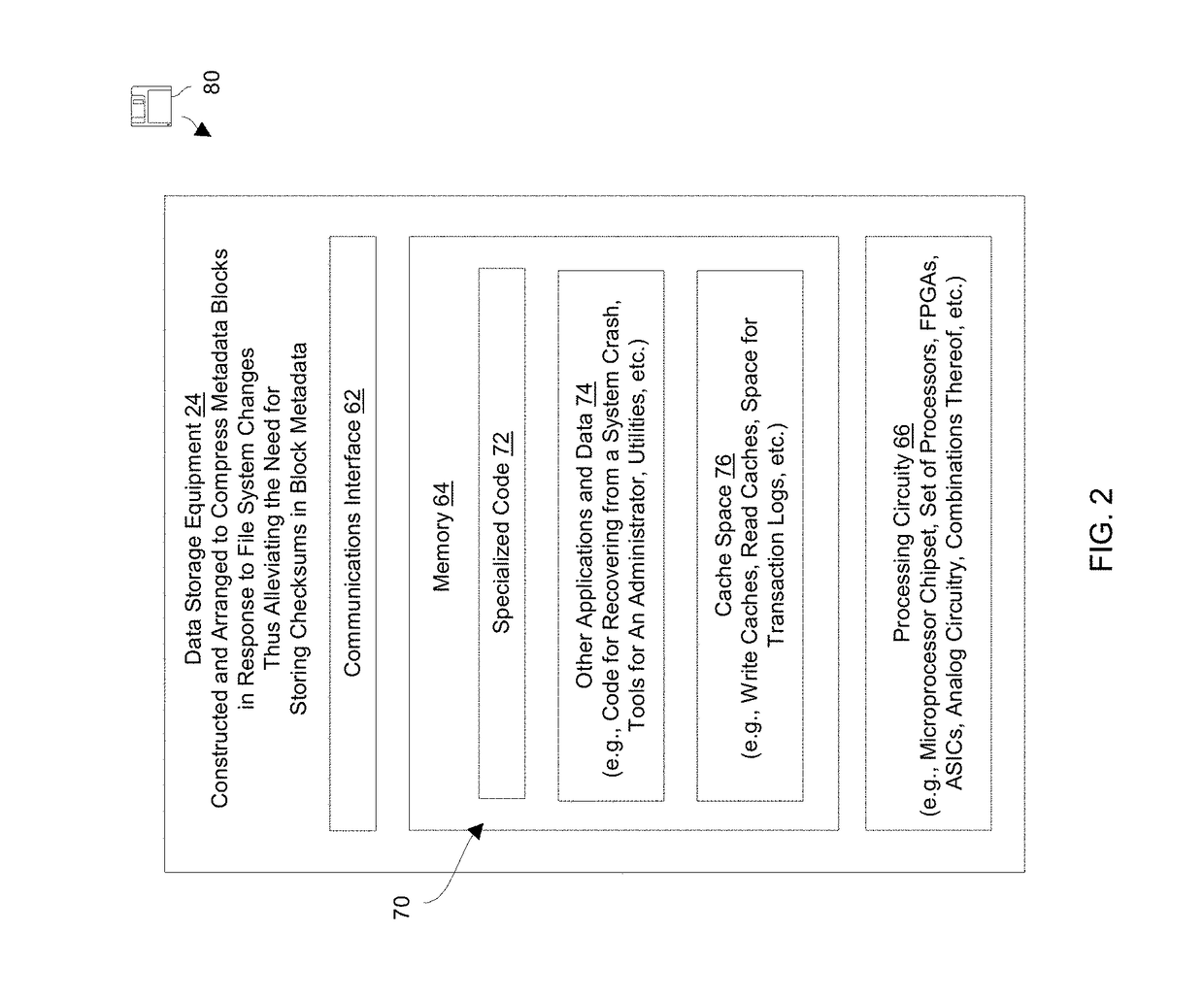Compressing metadata blocks prior to writing the metadata blocks out to secondary storage
a metadata block and metadata technology, applied in the field of data storage arrays, can solve the problems of providing additional wear on the flash memory by operation, and achieve the effects of enhancing security, high availability and data protection, and transparent operation
- Summary
- Abstract
- Description
- Claims
- Application Information
AI Technical Summary
Benefits of technology
Problems solved by technology
Method used
Image
Examples
Embodiment Construction
[0030]An improved technique is directed to compressing metadata blocks prior to writing the metadata blocks out to secondary storage when updating a file system with changes. Such techniques alleviate the need to store checksums in block metadata (BMDs) since verification of metadata block contents can be taken care of during decompression (i.e., confirmation of correct decompression further indicates that the metadata block contents are intact / good). As a result, there are less computerized resources consumed when updating the file system with changes and when locating data, and less wear of flash memory.
[0031]FIG. 1 is a block diagram of a data storage environment 20 which utilizes compression of metadata blocks prior to writing the metadata blocks out to secondary storage. The data storage environment 20 includes host computers 22(1), 22(2), . . . (collectively, host computers 22), data storage equipment 24, and a communications medium 26.
[0032]Each host computer 22 is constructe...
PUM
 Login to View More
Login to View More Abstract
Description
Claims
Application Information
 Login to View More
Login to View More - R&D
- Intellectual Property
- Life Sciences
- Materials
- Tech Scout
- Unparalleled Data Quality
- Higher Quality Content
- 60% Fewer Hallucinations
Browse by: Latest US Patents, China's latest patents, Technical Efficacy Thesaurus, Application Domain, Technology Topic, Popular Technical Reports.
© 2025 PatSnap. All rights reserved.Legal|Privacy policy|Modern Slavery Act Transparency Statement|Sitemap|About US| Contact US: help@patsnap.com



